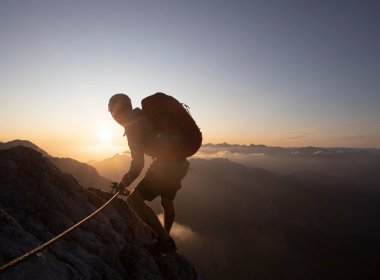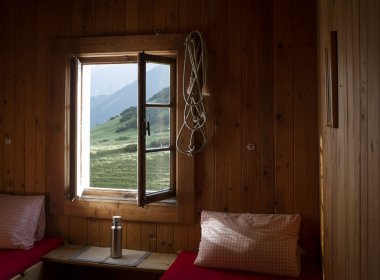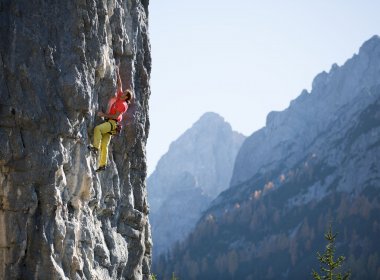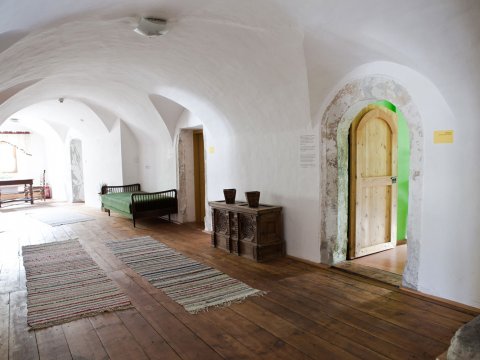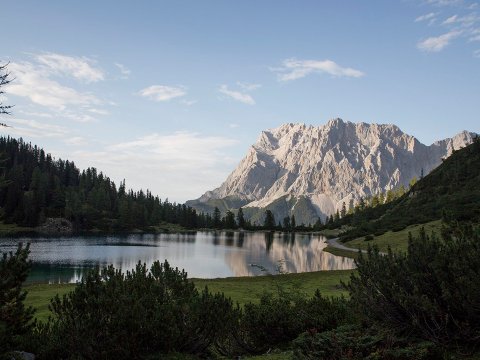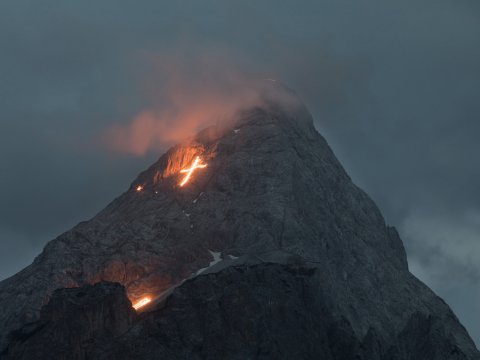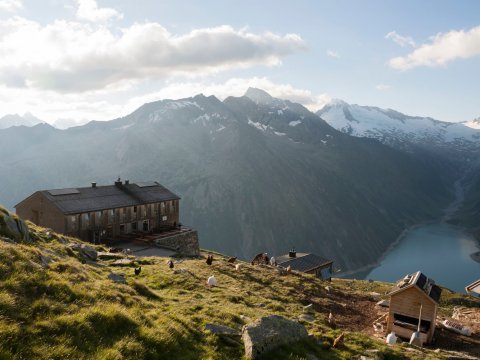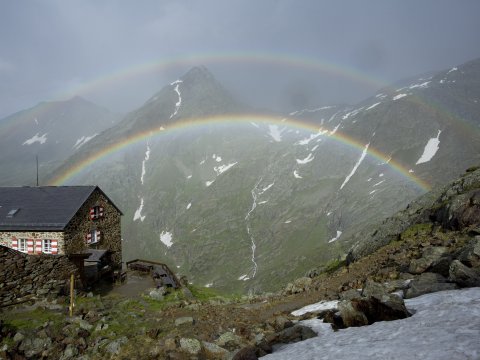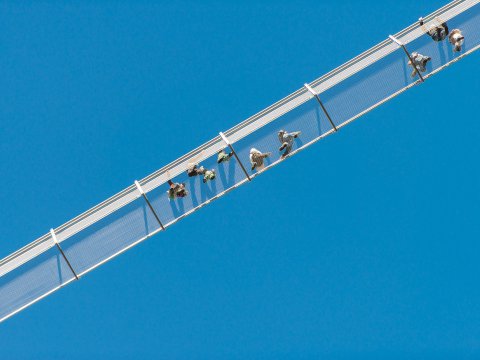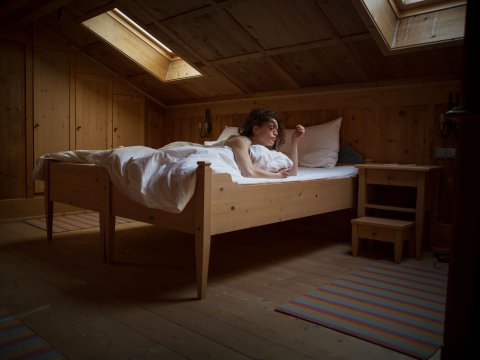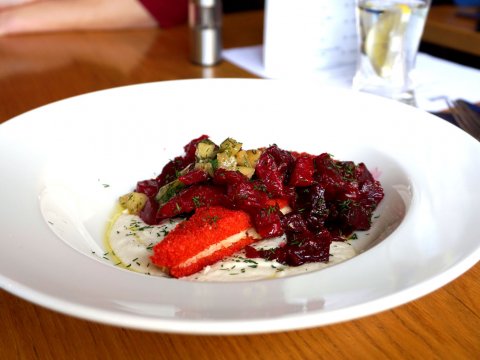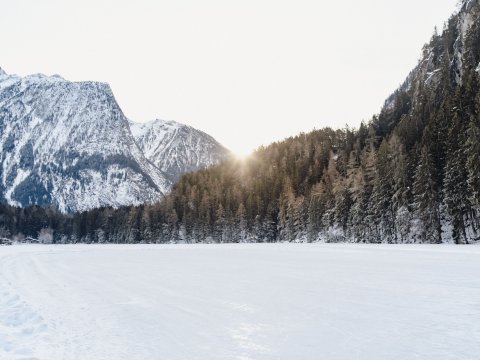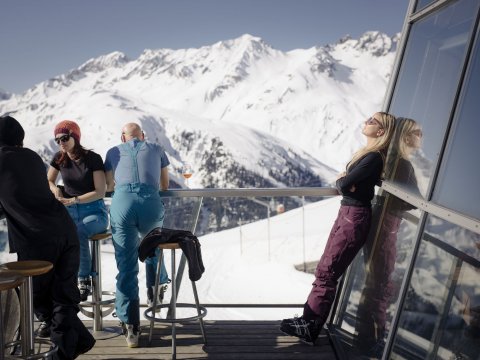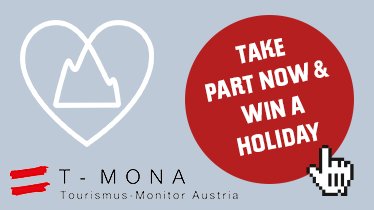From Wooden Wall Plugs to Sustainable Slippers

Exit the motorway, head into the valley, drive up to Längenfeld, then turn right towards the Ötztaler Ache river. Once you are there, it is almost impossible to miss: the Naturhotel Waldklause. Located on the edge of the forest, this mighty building with its eye-catching wooden façade stands out yet blends into the surroundings. The adventure really begins, however, when you step inside.
The entire building has been made from solid wood using no glue and no screws. While the insulation is natural sheep wool, the facade and load-bearing elements are made of local wood. There’s no doubt about it: the Naturhotel Waldklause is super eco-friendly. Yet, that doesn’t mean it’s aimed at hemp-wearing hippies. Instead, it combines environmental credentials with a state-of-the-art design. Five-star service and ecological sustainability – a match made in heaven or an unachievable utopia?
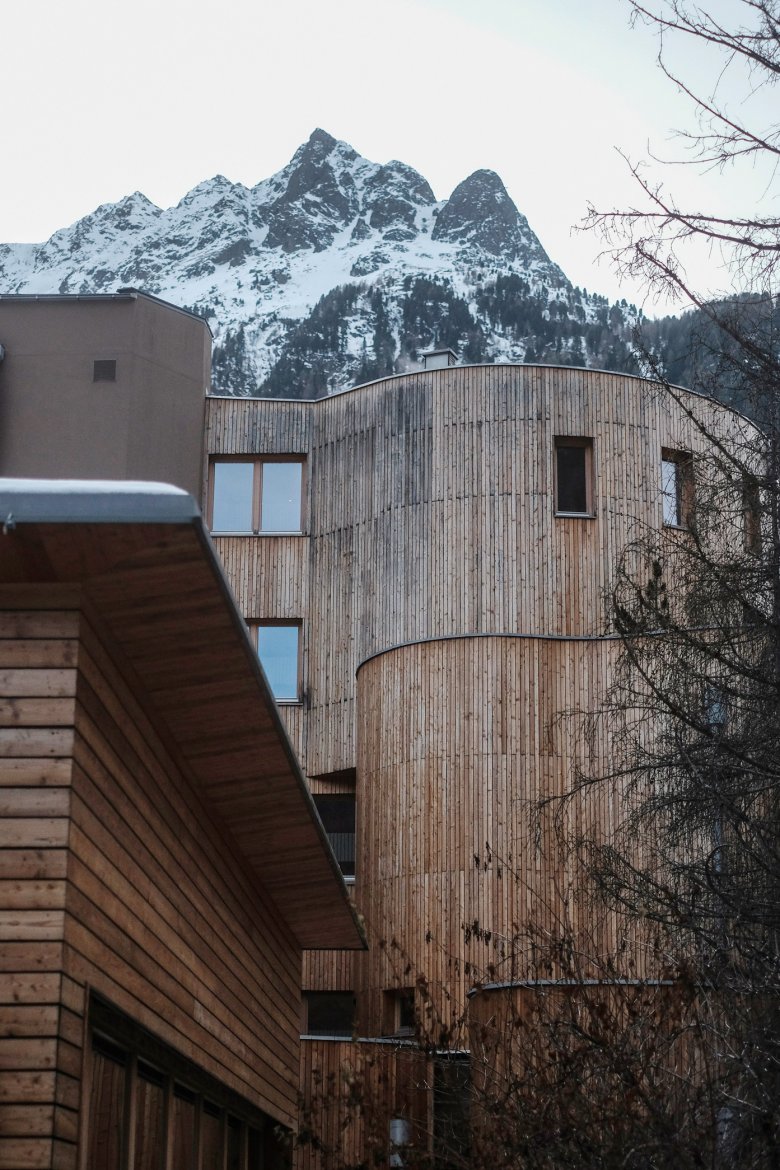
Planning began in 2001, with the Naturhotel Waldklause opening three years later. Located on the outskirts of Längenfeld, tucked away in a forest, it was Austria’s largest wooden building at the time. The only elements not made of wood were the emergency exit stairwells and the lift shafts. For safety reasons, both had to be constructed from concrete. “We didn’t have any choice in the matter – it the law and still applies to buildings today,” explains, Johannes Auer. His parents, Irene and Edmund, were the driving force behind the Naturhotel Waldklause. Today, the hotel is still family-run.
Johannes takes pride in showing us just how eco-friendly the building is, all the way down to details such as the wooden plugs in the solid pine walls. They are an environmentally-friendly alternative to screws, nails or glue. He admits that, 20 years ago, the hotel’s eco design was the source of some mirth in the local community. “People laughed at us. We got lots of advice on how to build it differently, how we could save money.” However, Irene and Edmund Auer didn’t let this scepticism derail their ambitions and stuck to their principles. “People from Tirol, especially those from the Ötztal Valley, have a reputation for being very stubborn,” says Johannes Auer with a wry smile. Today, with climate change and top of the international agenda, he feels the hotel was ahead of its time. “We chose the right approach at the right time,” he explains modestly. The five-star hotel is on average 90% full, making it the best-booked hotel in the Ötztal Valley. Though it may not always be the cheapest option, the family has maintained its eco-friendly approach until today. Proof of the hotel’s green credentials can be found in the form of numerous certificates confirming that it sources 100% of its electricity from renewables, awards and recommendations from the Climate Alliance Tirol and the Ötztal Nature Park, a platinum award from TripAdvisor for its eco-friendly concept, the European Ecolabel, and the seal of approval awarded by the Austrian Federal Ministry for Agriculture, Forestry, Environment and Water to companies and businesses with an outstanding approach to environmental protection. Such recognition is not easy to acquire. The respective institutions check everything from the delivery chain and the produce used in the kitchen to how marketing material is printed and the proportion of waste recycled before awarding their coveted stamp of approval. However, as Johannes Auer explains, the real challenges are in the nitty gritty of everyday life at the hotel. He and his team of 70 must maintain five-star standards for guests staying in the 59 rooms while at the same time keeping an eye on the environmental impact of everything they do.

Strawberries and water temperature
Keeping the ecological footprint to a minimum yet providing the facilities and service demanded in the five-star price segment is a blessing and a curse all in one. A good example, explains Auer, is the buffet. “I remember lots of people complained when we decided that we weren’t going to offer strawberries in winter,” says Johannes Auer. However, true to their Ötztal stubbornness, they stuck to their principles and soon found that people were understanding once the reasons behind the decision were explained. Whenever he walks through the hotel – along the wood-panelled corridors with their unmistakable pine scent, through the spa and past the pool – he always keeps his eyes open to check that everything meets his exacting standards and to identify further room for improvement. Some experiments work, others do not. Not long ago, he had the idea to reduce the temperature of the water in the pool by just one or two degrees – a project he quickly abandoned when guests requested the water be returned to the normal temperature.
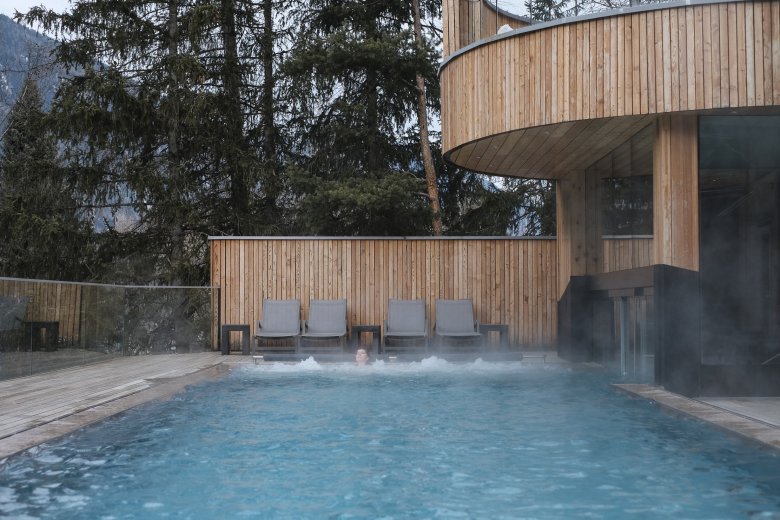
One absolutely essential element in the eco-friendly vs. luxury living balancing act is communication – both within the team and with the customers. “It took us a long time to come up with a good solution here,” he says as he picks up a pair of slippers from one of the suite beds. “We couldn’t find a laundry service that didn’t return the slippers wrapped in plastic. We therefore had to come up with our own solution.” It took the form of a paper bag – 100% recyclable – designed by the hotel and decorated by a local printer. Today, all slippers at the Naturhotel Waldklause are washed in the hotel’s own laundry and delivered to guests in paper bags. A small sign on the third floor informs visitors to the hotel that the laundry is washed using environmentally-friendly detergent. Yet another small detail that makes a little difference.
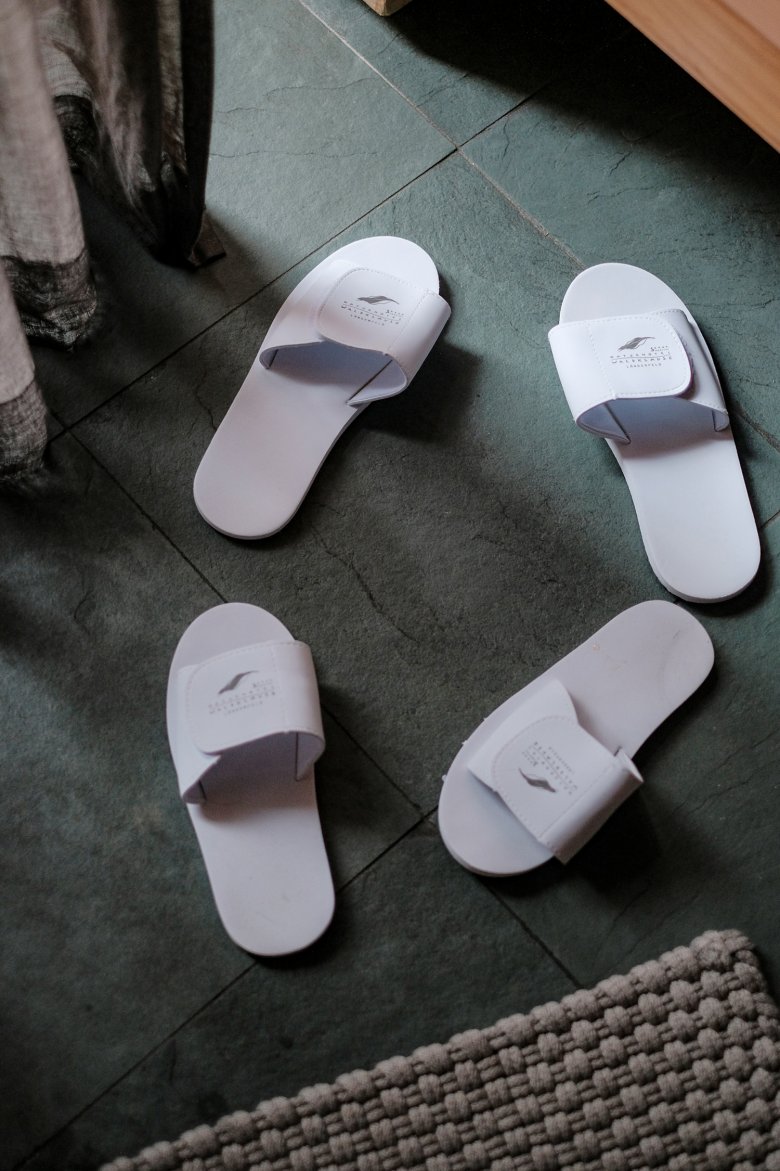

But what does “eco-friendly” really mean? And what about when you have to decide between organic and regional? “If push comes to shove, regional comes before organic,” Johannes Auer says. “All I can do is shake my head when I see organic chives imported from Venezuela.” His mother, Irene Auer, is in agreement. She is responsible for looking after the herb garden on the first-floor terrace. The regional approach also extends to the kitchen, where the chefs strive to use as much locally sourced produce as possible.
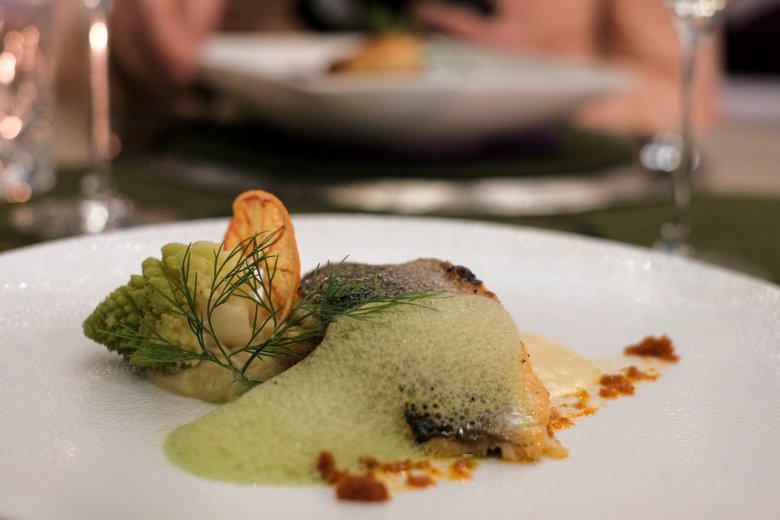
Helpful tips from hotel guests
The never-ending quest for maximum green credentials continues behind the bar. The owners were keen to find an alternative to single-use plastic straws, but paper went soggy too quickly and glass proved impractical. In the end, the solution came from a guest staying at the hotel. He mentioned a company based over the border in Alto Adige, Italy, which makes straws from 100% recycled plastic. They are now in use at the hotel – and the only problem is that they are so similar to normal plastic straws that guests don’t even notice the difference and sometimes speak to the manager to encourage him to finally start using environmentally friendly straws instead!
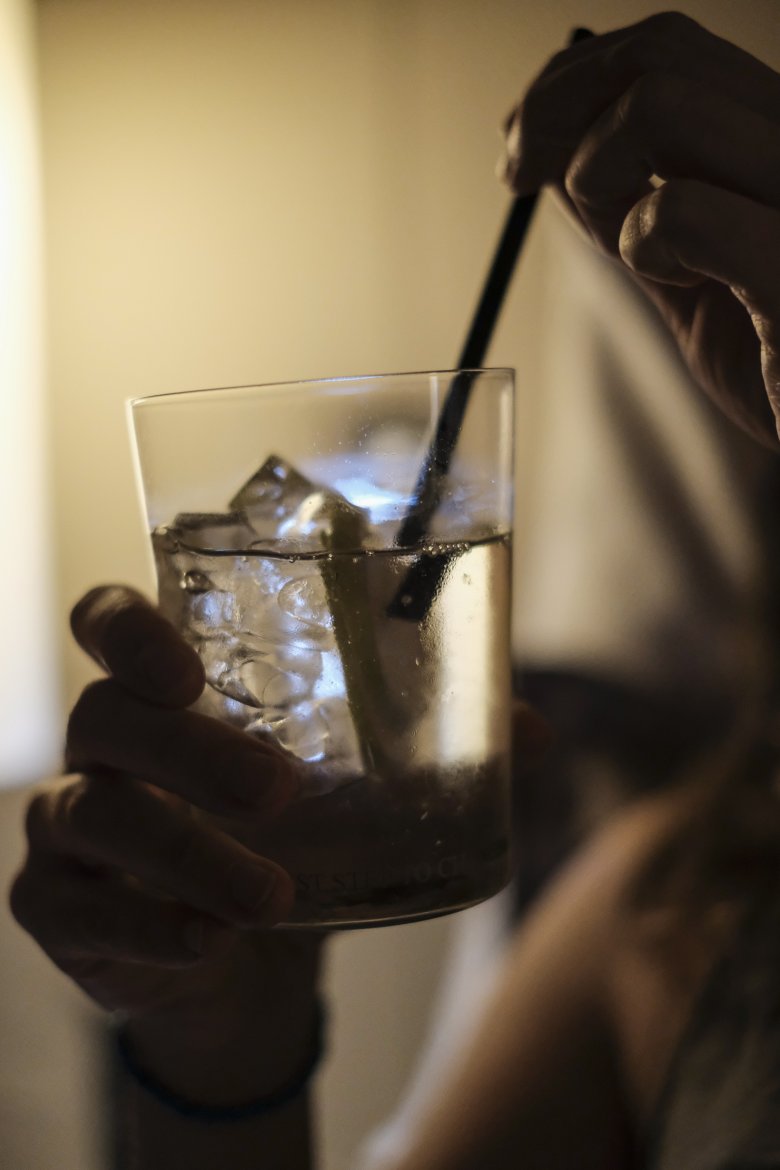
The are other areas, explains, Auer, where compromises are barely noticed. One is water. Spa hotels, especially luxury ones like the Naturhotel Waldklause, use huge amounts of water. Auer called in an energy expert, who identified potential for improvement by installing water-saving taps, toilets and showers. The use of water in the showers was reduced from 15 to less than 7 litres per minute. And nobody noticed the difference.

Our tour moves from the bathroom to the garage. The hotel’s own car is, of course, an electric one: a Renault Zoe. It is charged using one of the three recharging stations at the hotel – supplied, like the rest of the hotel, with 100% green electricity. The energy needed for room heating, hot water, etc. is sourced from the nearby biomass power plant in Längenfeld, just two kilometres away as the crow flies. As Auer explains, having an eco-friendly power station so close is a real bonus. Solar panels on the roof alone would not be enough to cover the energy demand of such a large hotel. Originally built to supply the nearby Aqua Dome thermal spa, the biomass plant today provides the whole village with energy. It is fired by burning wood pellets from local forests and creates almost 13,800 tonnes less of carbon dioxide than a comparable oil-burning plant such as those commonly still found in the Alps today. In June 2023, a 52 kWp solar system was added to the roof of the hotel and provides around 5% of the hotel's total annual electricity.
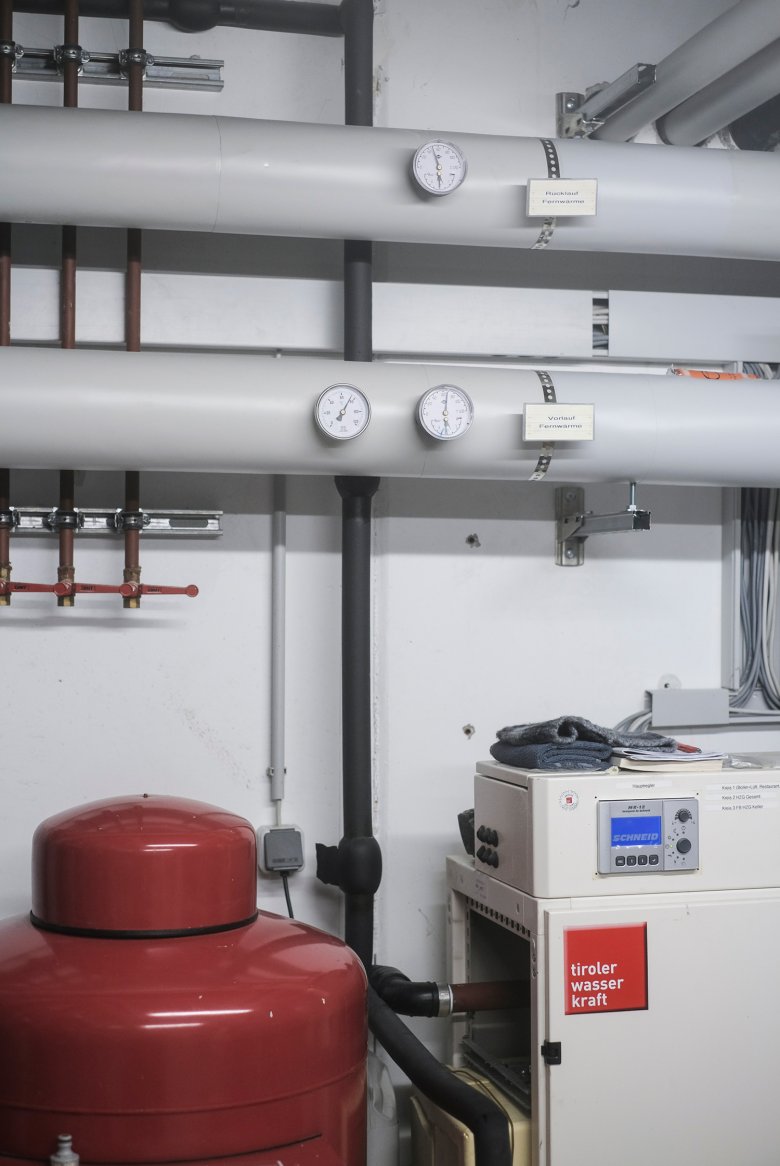
Making the most of the forest
While it is not immediately apparent where the hotel gets its energy from, the same cannot be said of its main building material: wood. The entire hotel, from the interior decor (pine) to the facade (larch), has been made using the number one raw material in Tirol, which can be found growing around the building. Guests who want to take a closer look at the trees in the forest need only walk the Treetop Trail, a wooden platform leading around the hotel and past the countless trees growing just a few centimetres from the façade. “The clue’s in the name,” smiles Johannes Auer. “Waldklause” means “forest retreat” in German. He stops in front of a five-metre-high tree trunk and looks up: “There’s a woodpecker living in their now. It’s a good job we decided to leave the trunk standing when the tree died.” The idea came from the local forest ranger, with whom the Auers work closely together. Their cooperation dates back nine years, when the hotel was expanded. “At the time we asked him to assess every tree in the forest to find out which are the best for building which parts of the extension. That way we managed to use as few trees as possible.” All the wood needed for the extension was sourced from Austria, much of it from the forests around Längenfeld. Each tree cut down was replaced with a new one by the ranger – making sure to use species native to the region such as pine and larch.
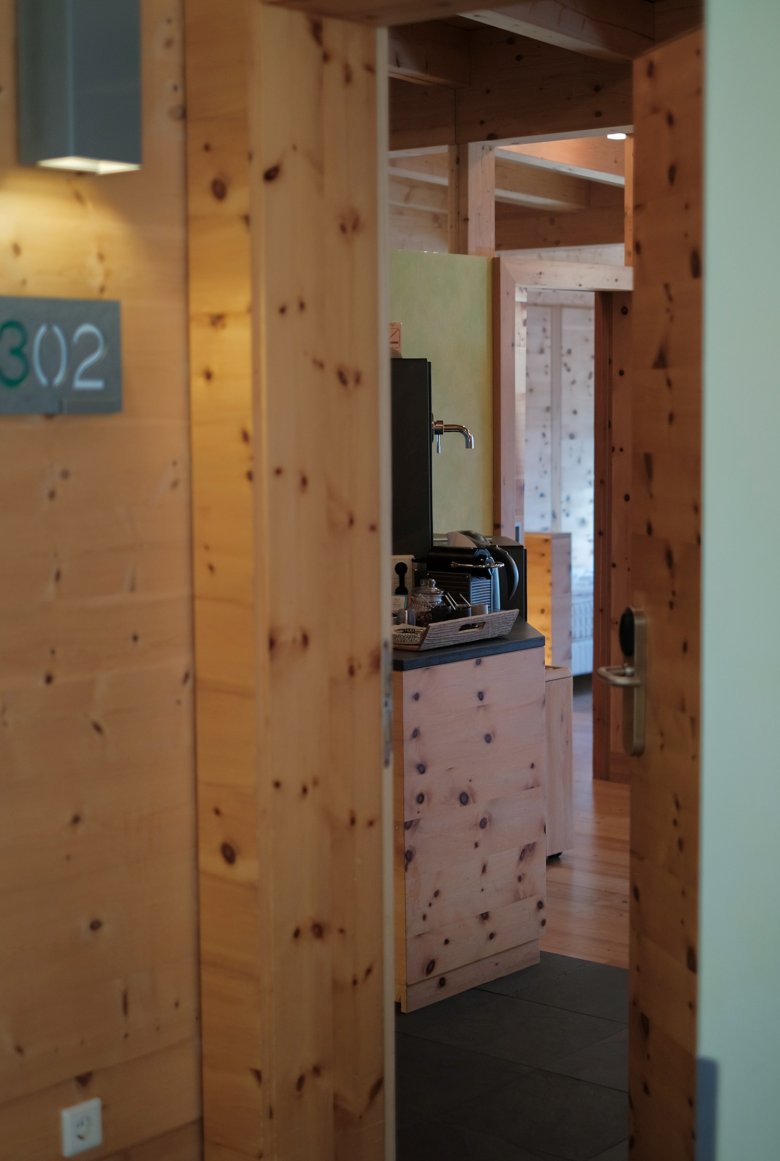
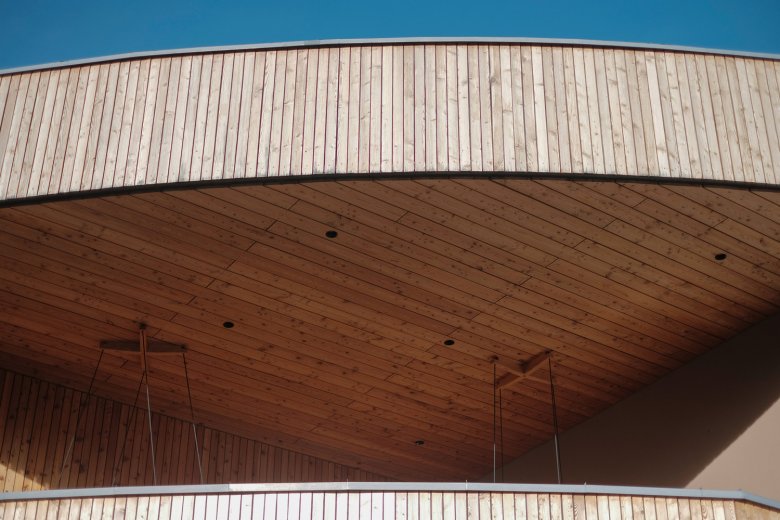
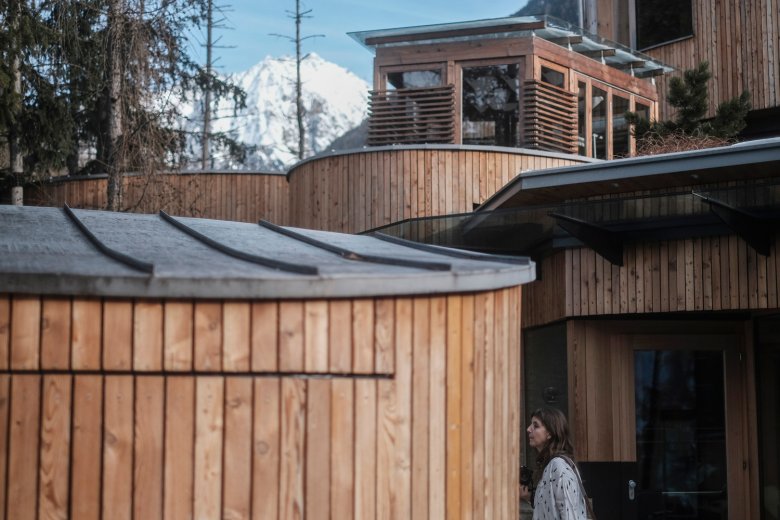

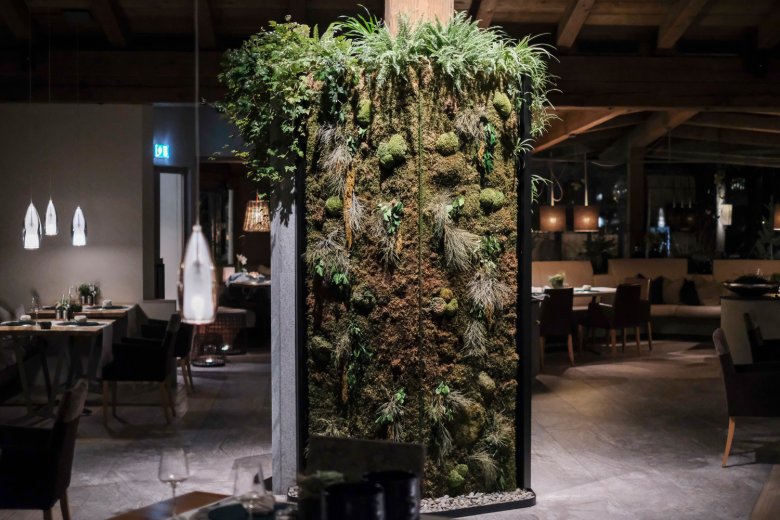
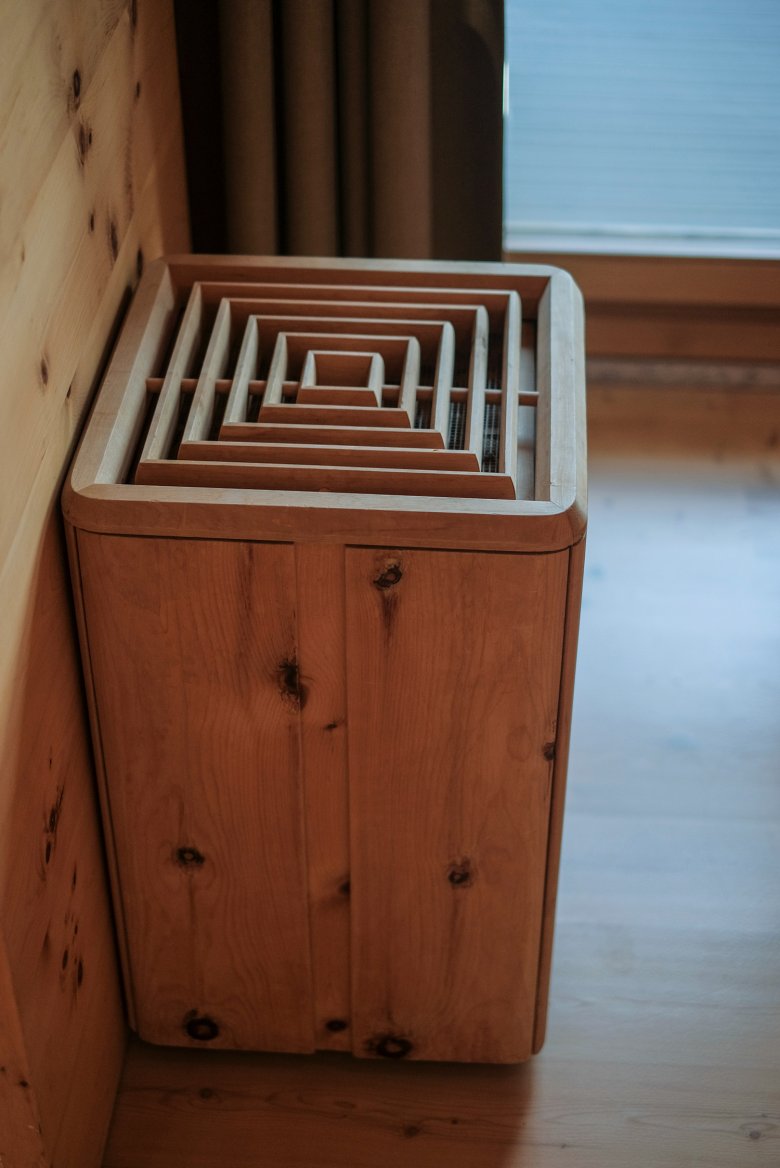
The man who designed the building, architect Markus Kastl, explains that the solid-wood concept is a combination of environmental sustainability, a commitment to using local materials and state-of-the-art design. Bringing all three together wasn’t easy. “Using wood was tricky for a number of reasons, not least when it came to sound insulation.” Johannes Auer remembers these problems well. Today he can look back and smile, but at the time his parents weren’t sure if they would ever solve the sound issue. The wood transmitted too much noise, making the initial prototypes of the rooms unusable. The family called in an expert from the University of Innsbruck, who came up with a solution – a wood-based one, of course. Cork tiles were fitted between the walls as insulation. Felt carpets were also installed in the hallways to dampen the sound of footsteps. The felt used comes, you guessed it, from wool produced by local sheep. It is a local solution and at the same time a nod to Johannes Auer’s grandfather, who worked as a shepherd in the valley.
Day for day, Johannes Auer will continue to walk through the Naturhotel Waldklause on the lookout for further improvements, big and small, to make his hotel even more environmentally friendly. The stubbornness which the people from the Ötztal Valley are famous for will drive him on, week for week, year for year. Johannes is an eco-warrior on a mission: to do things the right way, as nature intended.
Photos: Jörg Koopmann & Lene Harbo Pedersen










